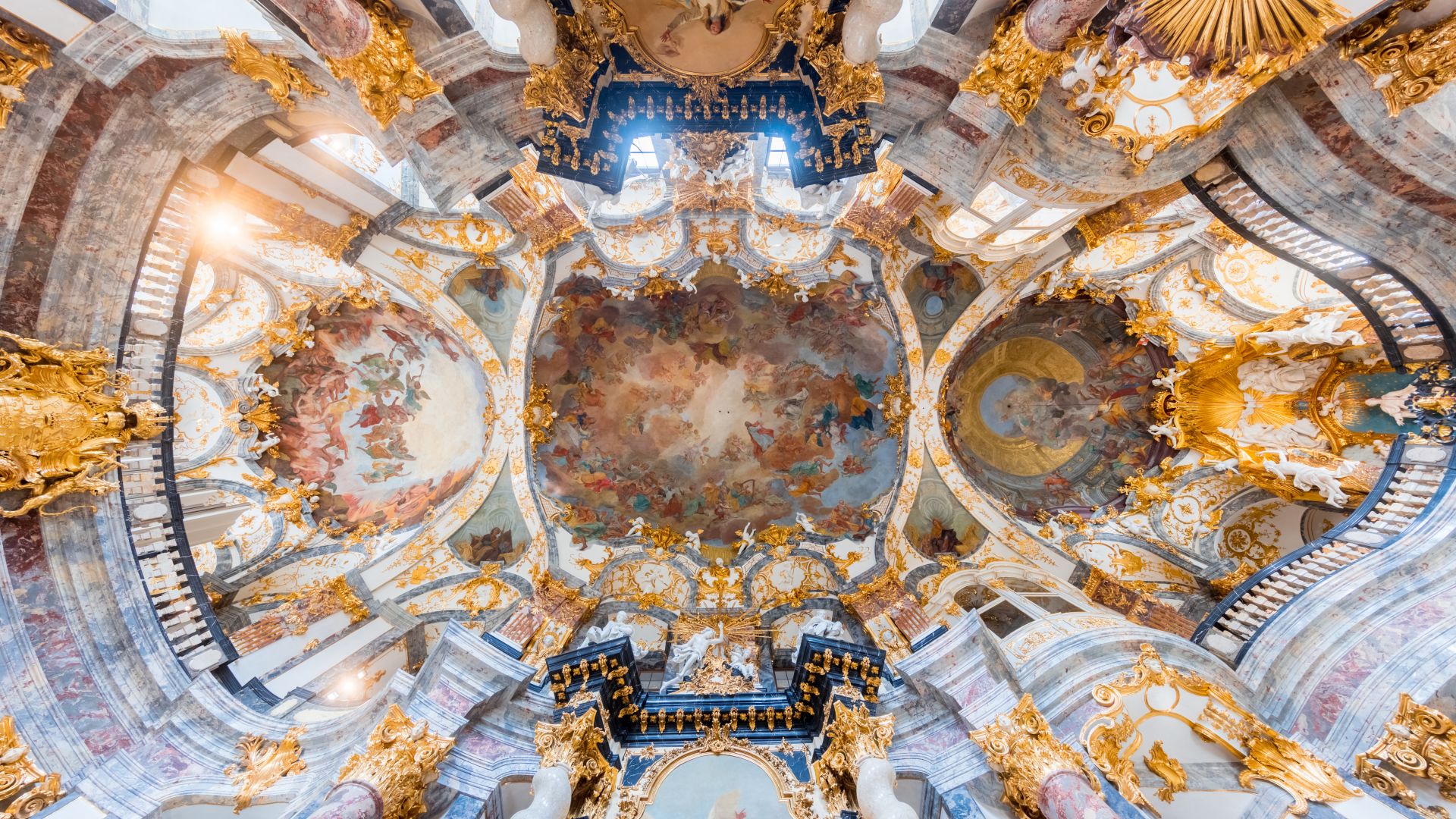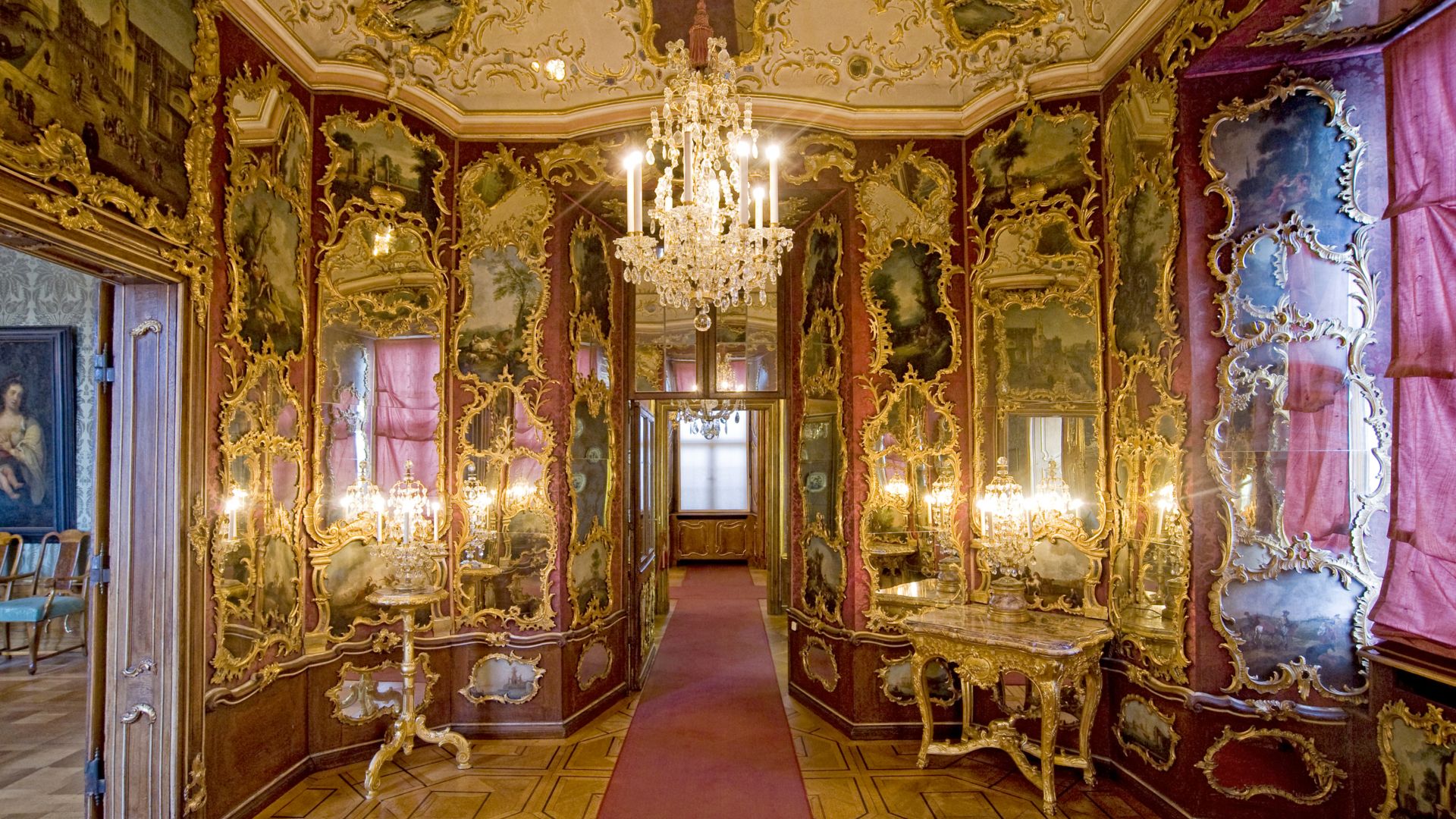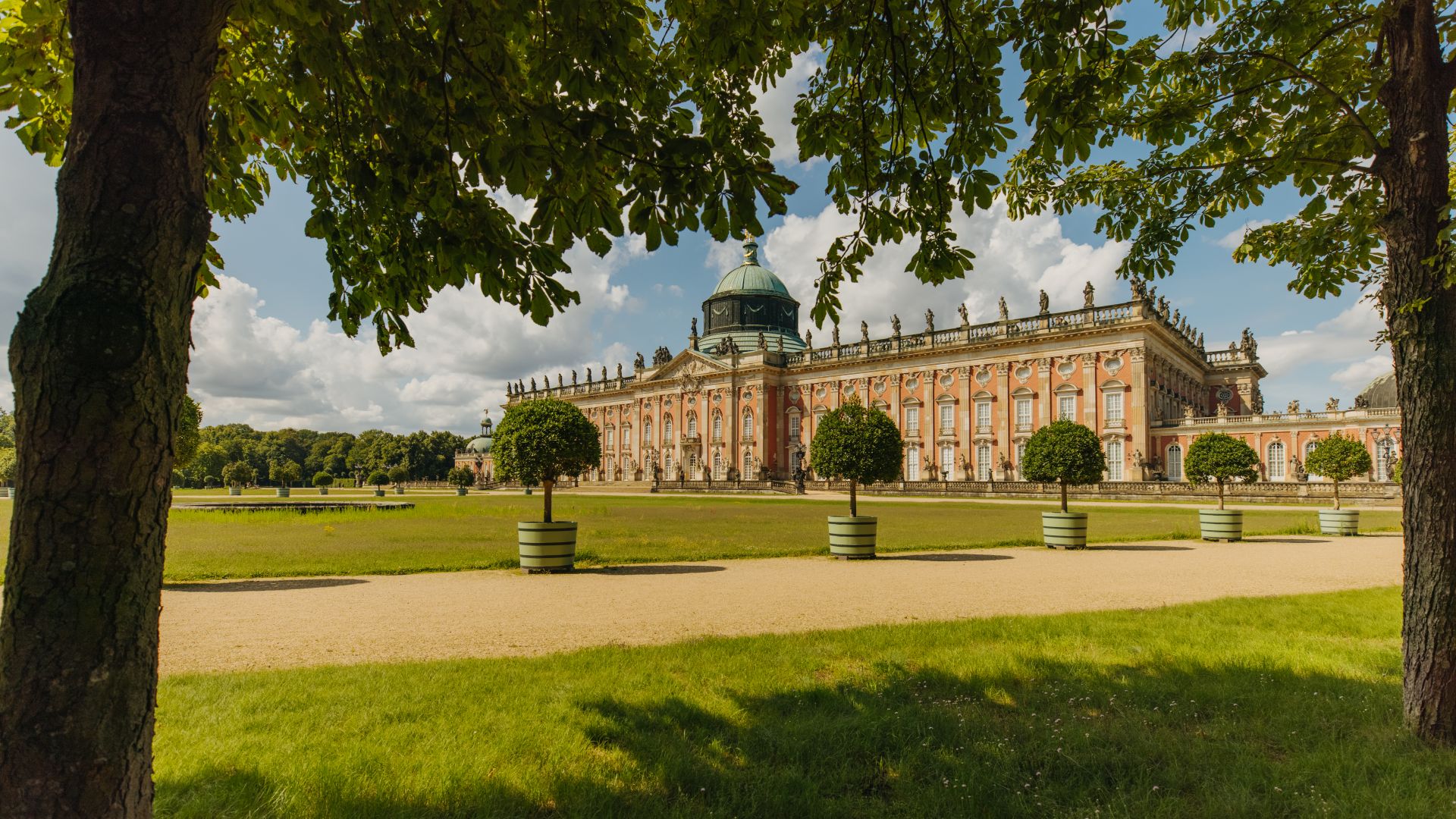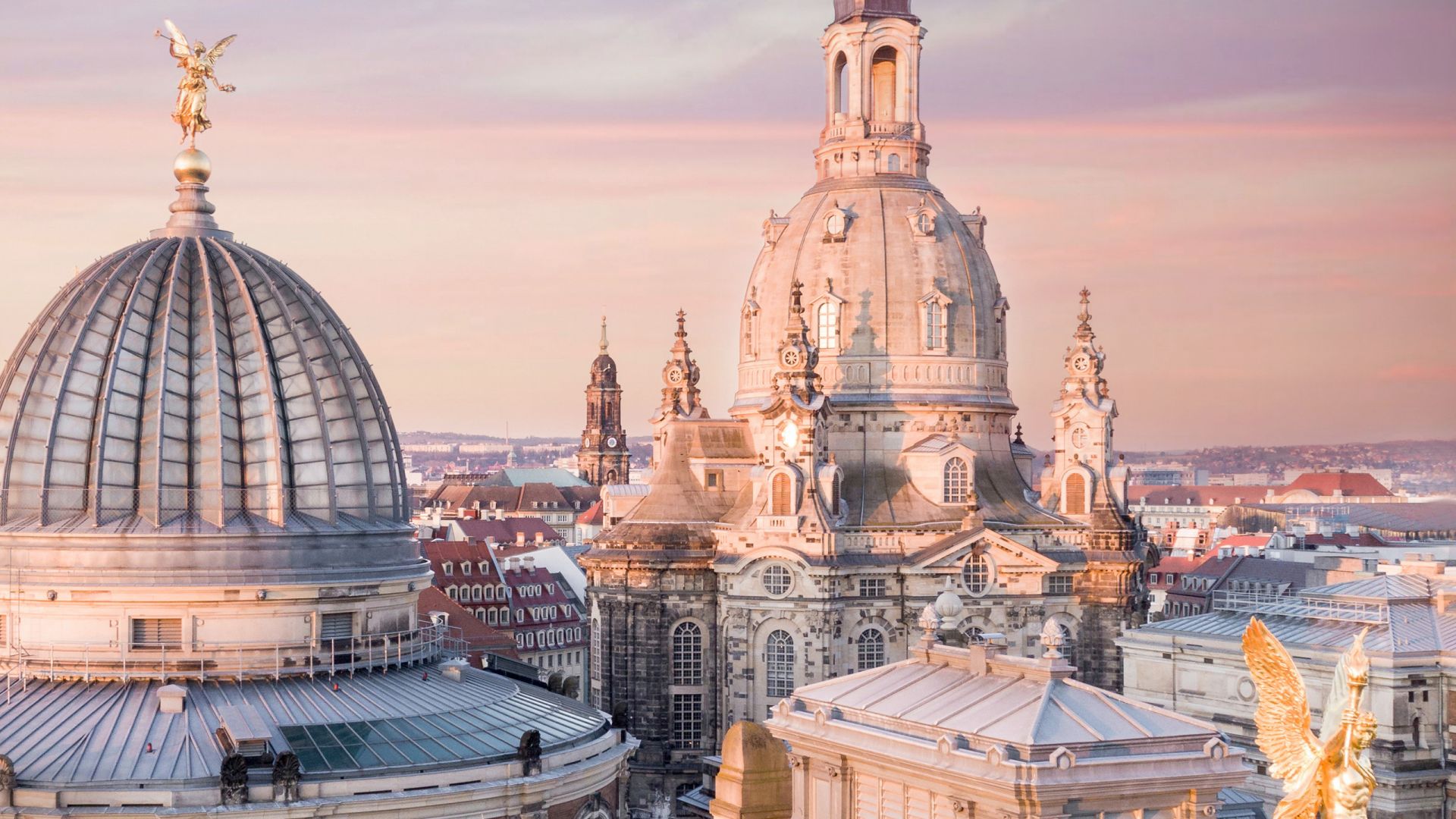Cities & Culture
Baroque Cities: Travel back in time to the 17th and 18th centuries
Curved buildings, playful lighting effects, generous gardens: the Baroque era is characterised by an extravagant variety of designs and historic splendour. This can still be admired today in castles and residences - even across entire city districts.
Würzburg: a hotspot of Baroque architecture
 Würzburg: Würzburg Residence with its Baroque painted ceilings, UNESCO World Heritage Site
©DZT (Loïc Lagarde)
Würzburg: Würzburg Residence with its Baroque painted ceilings, UNESCO World Heritage Site
©DZT (Loïc Lagarde)
Mirror, mirror, on the wall... Where is one of the most beautiful Baroque castles in (southern) Germany to be found? The answer: Surrounded by more than seven vineyards, right in the middle of Würzburg. This princely-bishop’s residence is also known as the castle above all castles” - and for good reason. Not surprisingly, this magnificent ensemble created by Balthasar Neumann, the most famous architect of the German Baroque, is on the UNESCO World Heritage List. Of the 40 palace rooms open to visitors (there are 400 rooms in total!), some of the most exciting ones include: the world-famous staircase with its ceiling fresco - at 18m x 30m it's the largest ever painted, the Court Chapel, celebrated as a “pioneering spatial invention”, and the Mirror Cabinet, reconstructed in 1887. The Court Gardens are also unique, with their arcades and terraces richly decorated with cherubs and other sculptures, steps and fountains, representing a beautiful symbiosis of nature and culture. Other landmarks of Würzburg, this Lower Franconian student city also famous for its wine, date back even further than the Baroque period of the 1600s: for instance, the twin-towered Würzburg Cathedral, dedicated to St. Kilian, which is one of the more than 60 churches in Würzburg, as well as the majestic Marienberg Fortress and the Old Main Bridge found below.
Fulda: Baroque city with a medieval touch
 Fulda: Mirror Cabinet City Palace
©Tourismus und Kongressmanagement Fulda (Christian Tech)
Fulda: Mirror Cabinet City Palace
©Tourismus und Kongressmanagement Fulda (Christian Tech)
Emerging from one of the largest and oldest monasteries in Central Europe, this Hessian town on the edge of the Rhön Mountains offers attractions from a history spanning over 1,250 years - from the Witch Tower to the pre-Romanesque St. Michael’s Church. However, a particularly significant period was undoubtedly the 17th century, and even more so the 18th century, during which a considerable number of feudal structures were either built or transformed, leading Fulda to adopt the nickname 'The Baroque City'. In the so-called Baroque Quarter, the city’s magnificent buildings of greatest significance are located very close to each other. Foremost among them is the splendid Cathedral of St. Salvator, constructed by the architectural maestro Johann Dientzenhofer, and its baroque-styled city palace along with the palace garden, orangery, and a nearly seven-meter-tall baroque sculpture, the Floravase Lavishly decorated town houses on and around Bonifatiusplatz and neighbouring aristocratic palaces complete the ensemble. Just a short walk away, the Old Town has more of a medieval appearance, thanks to its pretty half-timbered houses, cute alleyways and the remains of a centuries-old town wall.
Potsdam: castles and gardens fit for a movie
 Potsdam: Palace garden of Sanssouci Palace
©DZT (Julia Nimke)
Potsdam: Palace garden of Sanssouci Palace
©DZT (Julia Nimke)
It’s not like Frederick William I established Potsdam himself - after all, it was first mentioned more than seven centuries earlier, and certainly far earlier than neighbouring Berlin. But the “Soldier King”, and even more so his son, Frederick II, ensured an unparalleled Baroque makeover that still characterises the cityscape today. They decorated the buildings with domes, gables and ornate embellishments. The Old Market Square, where the Nikolai Churchwould later be built, was completely redesigned. And the crowning achievement: the enormous expansion of Park Sanssouci and the inauguration of the palace by the same name. Glowing descriptions including “Prussian Versailles” and a “major work of German rococo architecture” speak volumes. And the fact that the UNESCO World Heritage site encompassing the 'Palaces and Parks of Potsdam and Berlin' was expanded not just once, but twice, is also noteworthy. In 2019, the whole of Potsdam was recognised as a UNESCO City of Film. After all, Studio Babelsberg, founded in 1912 as the world’s first large film studio, is one of the most modern film and TV production centres in Europe.
Dresden: jewel in the Baroque crown
 Dresden: Frauenkirche at sunset
©mediaserver.dresden.de (Tomy Heyduck (DML-BY))
Dresden: Frauenkirche at sunset
©mediaserver.dresden.de (Tomy Heyduck (DML-BY))
Dresden’s ascent to being proclaimed “Florence on the Elbe is above all attributed to the Saxon Elector Augustus II the Strong. This long-reigning monarch cherished not only grandeur, but also architecture. The combination of both of his interests in the early 18th century resulted in the erection of significant architectural landmarks. The most notable among these is the Zwinger, with its arched galleries, splendid pavilions, and the gold-adorned Crown Gate, leaving no one unaffected by its charm. Not to mention the Old Masters Picture Gallery and the world's largest collection of porcelain housed here. Next door is theSemperoper opera house, a genuine five-star stop on your sightseeing tour. Just as with the nearby Frauenkirche, an impressive reconstruction was achieved here as well after the extensive damage suffered during the Dresden bombing of 1945. However, a visit to Moritzburg requires a car, while for the Baroque palace of Pillnitz, one can opt for a water taxi. On the way, and further in the direction of Saxon Switzerland, visitors can enjoy the Dixieland Sound, which is very popular in Dresden. This live music can sometimes be heard on the Brühl Terrace. By the way, Augustus II the Strong also played a role in “The Balcony of Europe”. At least, that’s the legend behind someone apparently finding his thumbprint on a railing.